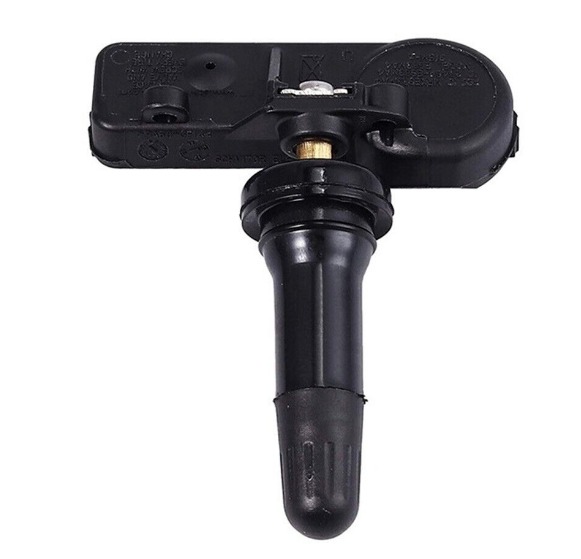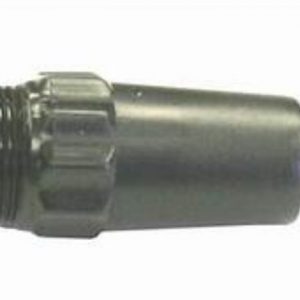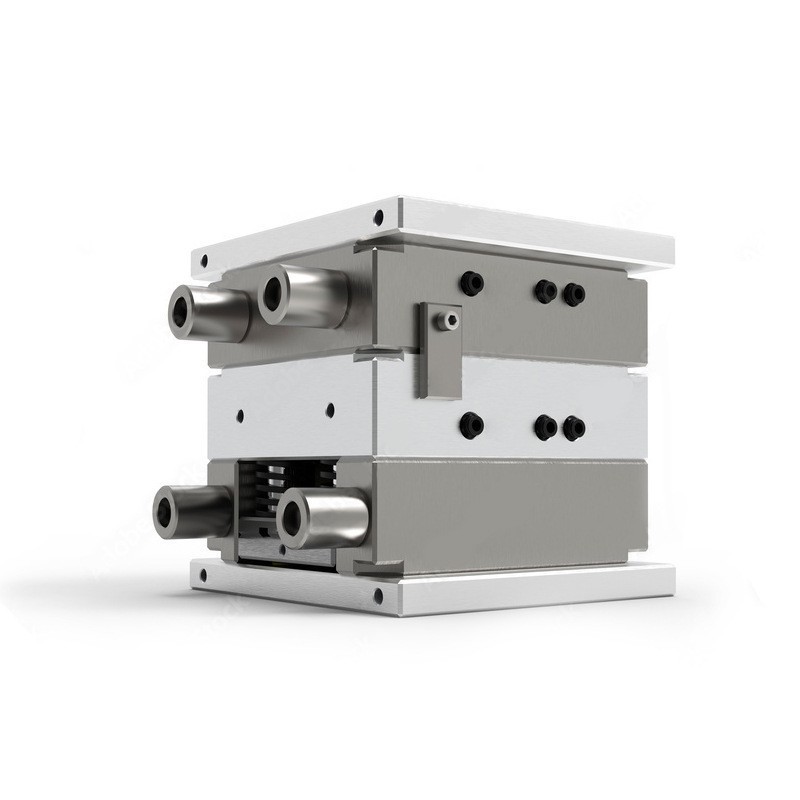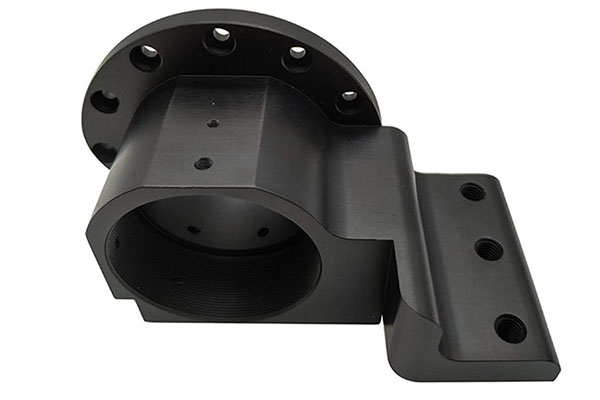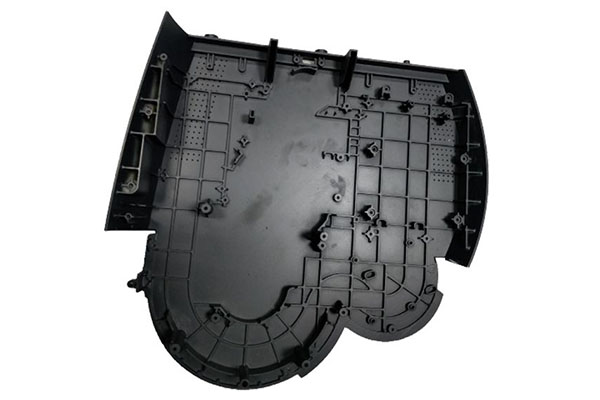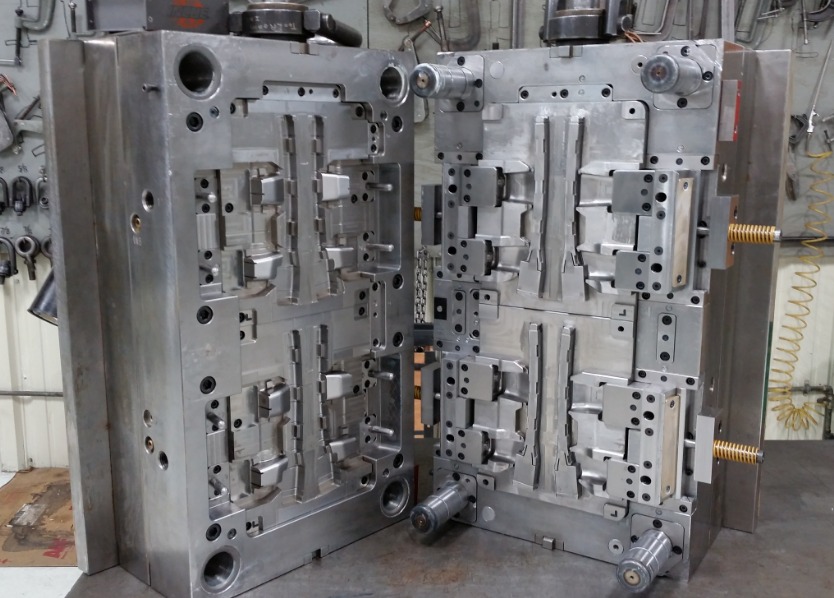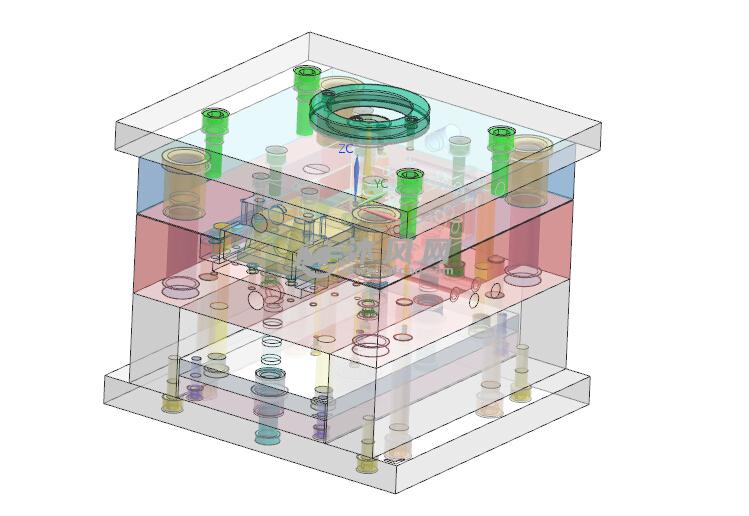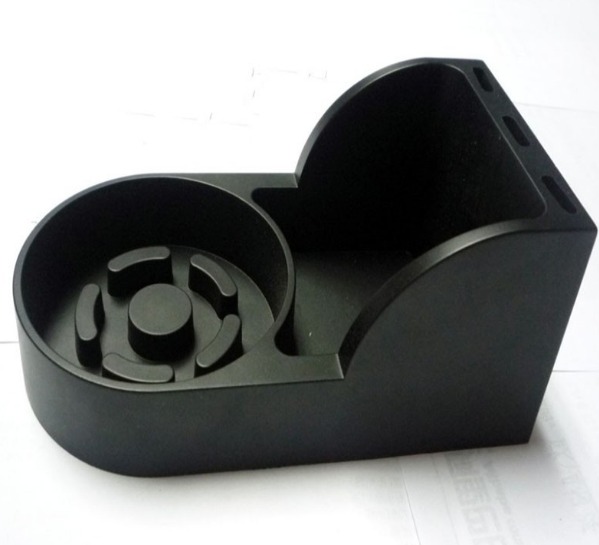What is PPE for Injection Molding?
In the realm of injection molding, PPE stands for Polyphenylene Ether, also known as Polyphenylene Oxide (PPO). It is a high - performance thermoplastic resin that has gained significant traction in various industries due to its remarkable properties. PPE is characterized by its outstanding heat resistance, with a glass transition temperature as high as 211°C and a melting point around 268°C, which allows it to maintain its structural integrity under elevated temperatures. This makes it an ideal choice for applications where components are exposed to heat during the injection molding process or in the end - use environment.
PPE also exhibits excellent electrical insulation properties. Its low dielectric constant (ranging from 2.6 - 2.8) and low dielectric loss tangent (0.008 - 0.0042, almost unaffected by temperature, humidity, and frequency) are among the best in the engineering plastics category. This property is crucial in injection - molded parts used in electrical and electronic applications, such as connectors, coil bobbins, and circuit board components, as it ensures reliable performance and minimizes signal interference.
Safety and protection are of utmost importance in injection molding processes. PPE materials play a dual - role in this regard. On one hand, the inherent properties of PPE contribute to the safety of the end - products. For instance, its high heat resistance and flame - retardant nature (with an oxygen index of 29, making it a self - extinguishing material) are crucial for applications where fire safety is a concern, such as in electrical enclosures. On the other hand, during the injection molding process, the use of PPE - based materials can also contribute to the protection of the injection molding equipment. Their dimensional stability helps prevent issues like mold wear and misalignment, which can lead to production interruptions and costly repairs.
Key PPE Components in Injection Molding
Safety Glasses
Safety glasses are a fundamental piece of PPE in injection molding. During the injection molding process, high - pressure injection can cause plastic particles to eject from the mold, and mechanical operations may generate metal fragments or other flying debris. These pose a significant threat to the eyes. For example, in a high - speed injection process, plastic pellets can be ejected at speeds high enough to penetrate the cornea if they hit the eyes directly.
There are different types of safety glasses available for injection molding. Impact - resistant safety glasses, usually made of polycarbonate lenses, are highly effective in protecting against high - velocity impacts. They can withstand the force of small plastic particles or metal fragments hitting the lens without shattering. Anti - fog safety glasses are also crucial, especially in environments where temperature variations can cause fogging on the lenses. This ensures that the operator always has a clear view, reducing the risk of accidents caused by obscured vision. For instance, when moving between a cold storage area for plastic raw materials and a hot injection molding machine, anti - fog glasses maintain clarity. Chemical - splash - resistant safety glasses are designed to prevent chemical substances used in the injection molding process, such as mold - release agents or cleaning solvents, from splashing into the eyes.
Gloves
Gloves serve multiple important functions in injection molding. First and foremost, they protect the hands from heat. Injection molding involves high - temperature processes, with molten plastic reaching temperatures that can easily cause burns. Heat - resistant gloves, often made of materials like aramid fibers (such as Nomex), can withstand temperatures up to 400°C in some cases, protecting the hands from direct contact with hot molds, nozzles, or freshly molded plastic parts.
Secondly, gloves provide protection against chemical corrosion. Many injection molding operations use chemicals such as solvents for cleaning molds or additives in the plastic materials. Chemical - resistant gloves, like those made of nitrile rubber, are excellent at resisting a wide range of chemicals. Nitrile gloves can resist acids, bases, and many organic solvents. They are also more puncture - resistant compared to latex gloves, with a puncture resistance that can be up to 3 times higher in some cases, making them suitable for handling sharp plastic edges or tools in the injection molding environment.
In addition, gloves with a non - slip surface enhance grip, which is crucial for safely handling molds, tools, and plastic products. This reduces the risk of dropping objects, which could cause damage to the products, equipment, or even injury to the operator. For example, when inserting a mold into the injection molding machine, a good grip provided by the gloves ensures a secure hold.
Protective Clothing
Protective clothing is designed to create a barrier between the body and potential hazards in the injection molding process. Molten plastic, which can splash during the injection or ejection phases, can cause severe burns if it comes into contact with the skin. Protective clothing made of materials such as fire - resistant and heat - resistant fabrics, like those containing aramid fibers, can resist the high temperatures of molten plastic and prevent it from adhering to the skin.
Chemical - resistant protective clothing is also essential. It shields the body from chemicals used in the injection molding process, including solvents, plasticizers, and other additives. These chemicals can cause skin irritation, chemical burns, or absorption through the skin, leading to systemic health issues. The clothing is designed with tight - fitting cuffs, collars, and zippers to prevent chemicals from seeping inside.
The design of protective clothing often includes features like double - layer construction in critical areas for added protection, and it is usually made to be lightweight and flexible enough to allow for a full range of motion. This ensures that the operator can perform tasks efficiently while remaining protected.
Respiratory Protection
Injection molding processes can generate a variety of airborne hazards. Volatile organic compounds (VOCs) are released when the plastic is heated. These can include substances like benzene, toluene, and formaldehyde, which are known to be harmful to human health. Long - term exposure to VOCs can cause respiratory problems, such as asthma, bronchitis, and in severe cases, even cancer. Additionally, fine plastic dust particles can be generated during processes like material handling, grinding, or when there are leaks in the injection system. Inhaling these particles can lead to respiratory diseases like pneumoconiosis.
To protect against these hazards, respiratory protection devices are necessary. Disposable N95 or FFP2 respirators are commonly used. An N95 respirator has a filtration efficiency of at least 95% for non - oily particles, effectively filtering out plastic dust particles. For environments with high levels of VOCs, gas - mask - style respirators with appropriate cartridges are required. These cartridges are designed to absorb or chemically react with specific VOCs, neutralizing them before they are inhaled. For example, activated - carbon - based cartridges are effective in adsorbing many types of organic vapors. It's important to choose the right type of respiratory protection based on the specific hazards present in the injection molding environment and to ensure proper fit and usage to maximize protection.
How to Choose the Right PPE
Consider the Plastic Material Used
The choice of PPE in injection molding is highly dependent on the plastic material being processed. Different plastic materials have unique characteristics during the injection molding process, which pose different risks to the operator.
For instance, when working with PVC (Polyvinyl Chloride), it is crucial to be aware that PVC can release harmful chlorine - containing gases when heated during injection molding. These gases are not only irritating to the respiratory system but can also cause long - term health issues if inhaled over time. In such cases, a high - quality respirator with appropriate cartridges is essential. A respirator with activated - carbon cartridges can effectively adsorb these harmful gases, providing protection to the operator's respiratory tract. Additionally, PVC may also require chemical - resistant gloves. PVC processing may involve the use of plasticizers and stabilizers, which can be corrosive to the skin. Nitrile - based gloves can resist the chemical attack from these substances, protecting the hands from potential chemical burns or skin irritations.
When dealing with high - temperature - resistant plastics like PEEK (Polyether - ether - ketone), the main concern is the extreme heat during the injection molding process. PEEK has a high melting point, and the molten material and the equipment parts in contact with it can reach very high temperatures. Workers need to wear heat - resistant gloves made of advanced materials such as aramid fibers, which can withstand temperatures well above the melting point of PEEK. These gloves prevent burns when handling hot molds or freshly molded PEEK products. Also, heat - resistant aprons or coveralls may be necessary to protect the body from splashes of hot molten PEEK.
Evaluate the Injection Molding Process
Each step of the injection molding process has its own set of potential hazards, and understanding these is key to choosing the right PPE.
During the injection phase, high - pressure injection is used to force the molten plastic into the mold. The high - pressure environment means that there is a risk of plastic particles ejecting from the mold. In this case, safety glasses with impact - resistant lenses are a must. These glasses can protect the eyes from high - velocity plastic particles that could otherwise cause serious eye injuries. For example, if the injection pressure is set too high or there are defects in the mold, plastic pellets may be ejected at speeds that can penetrate soft materials, and only impact - resistant safety glasses can provide sufficient protection.
The mold - opening and - closing process is another area of concern. This mechanical operation involves moving parts that can cause 夹伤 or crushing injuries to the hands or body. Workers should wear safety gloves that not only protect against heat and chemicals but also have a certain degree of cut - resistance. Additionally, safety guards and interlock systems should be in place on the injection molding machine. However, in case of any malfunction, the operator needs to be able to react quickly, and the cut - resistant gloves can provide an extra layer of protection.
When it comes to the post - molding operations, such as removing the molded parts from the mold and trimming excess plastic, sharp edges on the plastic parts can be a hazard. Gloves with a reinforced palm and fingertips can prevent cuts and abrasions. Also, ear protection may be required if the trimming process involves the use of noisy tools, as the noise can potentially damage the operator's hearing over time.
Fit and Comfort
The fit and comfort of PPE are often overlooked but are crucial factors in ensuring that operators will actually use the equipment as required.
Ill - fitting PPE can be more of a hindrance than a help. For example, if safety glasses are too large, they may slide down the nose, obscuring the operator's vision, which is a serious safety risk in an injection molding environment where clear vision is essential. On the other hand, if they are too small, they can cause discomfort and pressure points, leading the operator to remove them. To ensure a proper fit, safety glasses should be adjustable, with features such as adjustable nose pads and temple lengths.
Gloves that are too tight can restrict blood circulation, causing discomfort and fatigue in the hands, while gloves that are too loose can reduce dexterity and grip. Most glove manufacturers offer a range of sizes, and it is important to measure the hand accurately to select the right size. Some gloves also come with stretchable materials or ergonomic designs to enhance comfort and fit.
Protective clothing that is too tight can limit movement, making it difficult for the operator to perform tasks efficiently. It can also cause chafing and discomfort, especially during long - term use. Loose - fitting clothing, however, may get caught in the machinery. Protective clothing should be designed to provide a full range of motion while still maintaining a snug fit in areas such as the cuffs, collars, and waist. It should also be made of lightweight and breathable materials to prevent overheating, as workers in injection molding environments are often exposed to heat sources. Comfortable and well - fitting PPE not only ensures the safety of the operator but also improves work efficiency and reduces the likelihood of the operator removing the PPE due to discomfort.
Yigu Technology's Perspective
As a non - standard plastic metal products custom Supplier, Yigu Technology highly values PPE in injection molding. We understand that the right choice of PPE materials not only ensures the safety of our workers but also plays a crucial role in maintaining product quality. Our experience has shown that using PPE with high heat resistance and dimensional stability, like PPE - based polymers, can prevent mold damage during the injection molding process. This, in turn, reduces production errors and boosts overall efficiency. We always stay updated with the latest industry standards for PPE selection and usage, and we are committed to providing our customers with products that meet the highest safety and quality requirements. By adhering to strict safety protocols and using top - quality PPE materials, we strive to create a safe working environment and deliver reliable products to our clients.
FAQ
What are the most common types of PPE for injection molding?
The most common types of PPE for injection molding include safety glasses to protect the eyes from flying plastic particles and debris, heat - resistant and chemical - resistant gloves to safeguard the hands from heat, chemicals, and sharp edges, protective clothing made of heat - and chemical - resistant materials to shield the body from molten plastic splashes and chemical exposure, and respiratory protection such as N95 respirators or gas - mask - style respirators to filter out plastic dust particles and harmful gases like VOCs.
How often should PPE be replaced?
The replacement frequency of PPE depends on several factors. Safety glasses should be replaced if the lenses get scratched to the point where they affect vision, usually after significant wear and tear which could occur within 6 - 12 months with daily use. Gloves, especially those made of nitrile or aramid for chemical and heat resistance, may need replacement every 1 - 3 months if used frequently, or immediately if they develop holes or tears. Protective clothing should be replaced when it shows signs of significant wear, such as fraying, loss of fire - resistant properties, or chemical damage, typically after 6 - 12 months of regular use. Respiratory protection like N95 respirators should be replaced every 40 - 80 hours of use, while gas - mask cartridges need replacement according to the manufacturer's guidelines, usually when the cartridge has reached its saturation limit for the specific gases it is designed to filter.
Can I choose any PPE as long as it's labeled for industrial use?
No, you cannot choose just any PPE labeled for industrial use. Injection molding has its own unique set of hazards, such as high - temperature plastics, chemical exposure, and mechanical risks. For example, a respirator labeled for general industrial dust may not be suitable for filtering out the specific VOCs released during injection molding of certain plastics. Each PPE must be carefully selected based on the specific risks present in the injection molding process, including the type of plastic being processed, the temperature and pressure involved, and the chemicals used. Choosing the wrong PPE, even if it is labeled for industrial use, can lead to inadequate protection and potential safety hazards.
